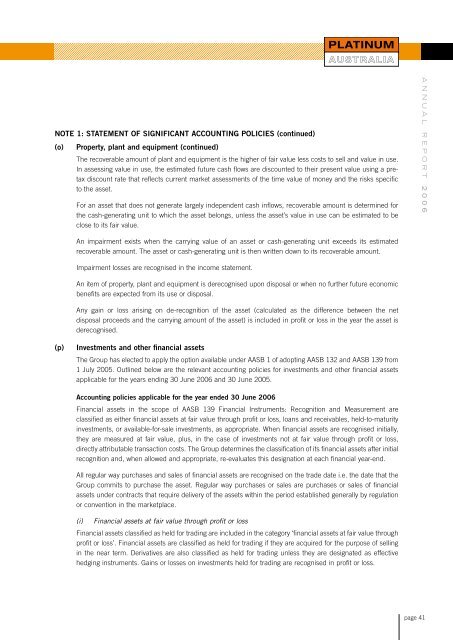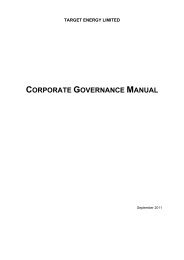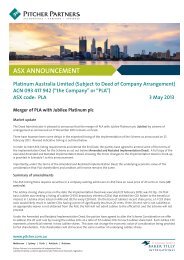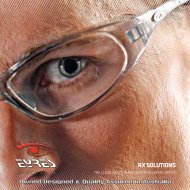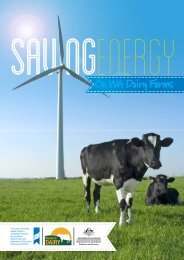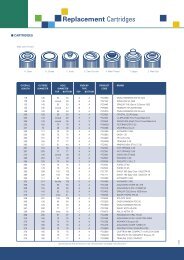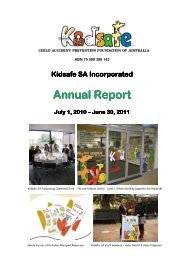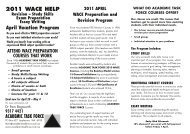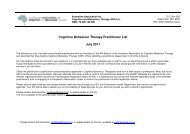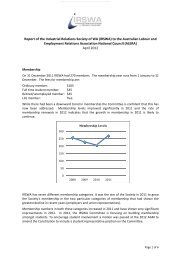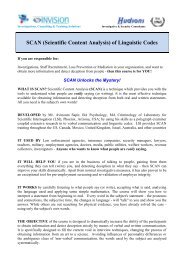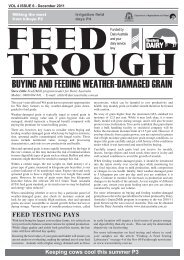ANNUAL REPORT 2006
ANNUAL REPORT 2006
ANNUAL REPORT 2006
Create successful ePaper yourself
Turn your PDF publications into a flip-book with our unique Google optimized e-Paper software.
NOTE 1: STATEMENT OF SIGNIFICANT ACCOUNTING POLICIES (continued)<br />
(o) Property, plant and equipment (continued)<br />
The recoverable amount of plant and equipment is the higher of fair value less costs to sell and value in use.<br />
In assessing value in use, the estimated future cash flows are discounted to their present value using a pretax<br />
discount rate that reflects current market assessments of the time value of money and the risks specific<br />
to the asset.<br />
For an asset that does not generate largely independent cash inflows, recoverable amount is determined for<br />
the cash-generating unit to which the asset belongs, unless the asset’s value in use can be estimated to be<br />
close to its fair value.<br />
A N N U A L R E P O R T 2 0 0 6<br />
An impairment exists when the carrying value of an asset or cash-generating unit exceeds its estimated<br />
recoverable amount. The asset or cash-generating unit is then written down to its recoverable amount.<br />
Impairment losses are recognised in the income statement.<br />
An item of property, plant and equipment is derecognised upon disposal or when no further future economic<br />
benefits are expected from its use or disposal.<br />
Any gain or loss arising on de-recognition of the asset (calculated as the difference between the net<br />
disposal proceeds and the carrying amount of the asset) is included in profit or loss in the year the asset is<br />
derecognised.<br />
(p)<br />
Investments and other financial assets<br />
The Group has elected to apply the option available under AASB 1 of adopting AASB 132 and AASB 139 from<br />
1 July 2005. Outlined below are the relevant accounting policies for investments and other financial assets<br />
applicable for the years ending 30 June <strong>2006</strong> and 30 June 2005.<br />
Accounting policies applicable for the year ended 30 June <strong>2006</strong><br />
Financial assets in the scope of AASB 139 Financial Instruments: Recognition and Measurement are<br />
classified as either financial assets at fair value through profit or loss, loans and receivables, held-to-maturity<br />
investments, or available-for-sale investments, as appropriate. When financial assets are recognised initially,<br />
they are measured at fair value, plus, in the case of investments not at fair value through profit or loss,<br />
directly attributable transaction costs. The Group determines the classification of its financial assets after initial<br />
recognition and, when allowed and appropriate, re-evaluates this designation at each financial year-end.<br />
All regular way purchases and sales of financial assets are recognised on the trade date i.e. the date that the<br />
Group commits to purchase the asset. Regular way purchases or sales are purchases or sales of financial<br />
assets under contracts that require delivery of the assets within the period established generally by regulation<br />
or convention in the marketplace.<br />
(i) Financial assets at fair value through profit or loss<br />
Financial assets classified as held for trading are included in the category ‘financial assets at fair value through<br />
profit or loss’. Financial assets are classified as held for trading if they are acquired for the purpose of selling<br />
in the near term. Derivatives are also classified as held for trading unless they are designated as effective<br />
hedging instruments. Gains or losses on investments held for trading are recognised in profit or loss.<br />
page 41


